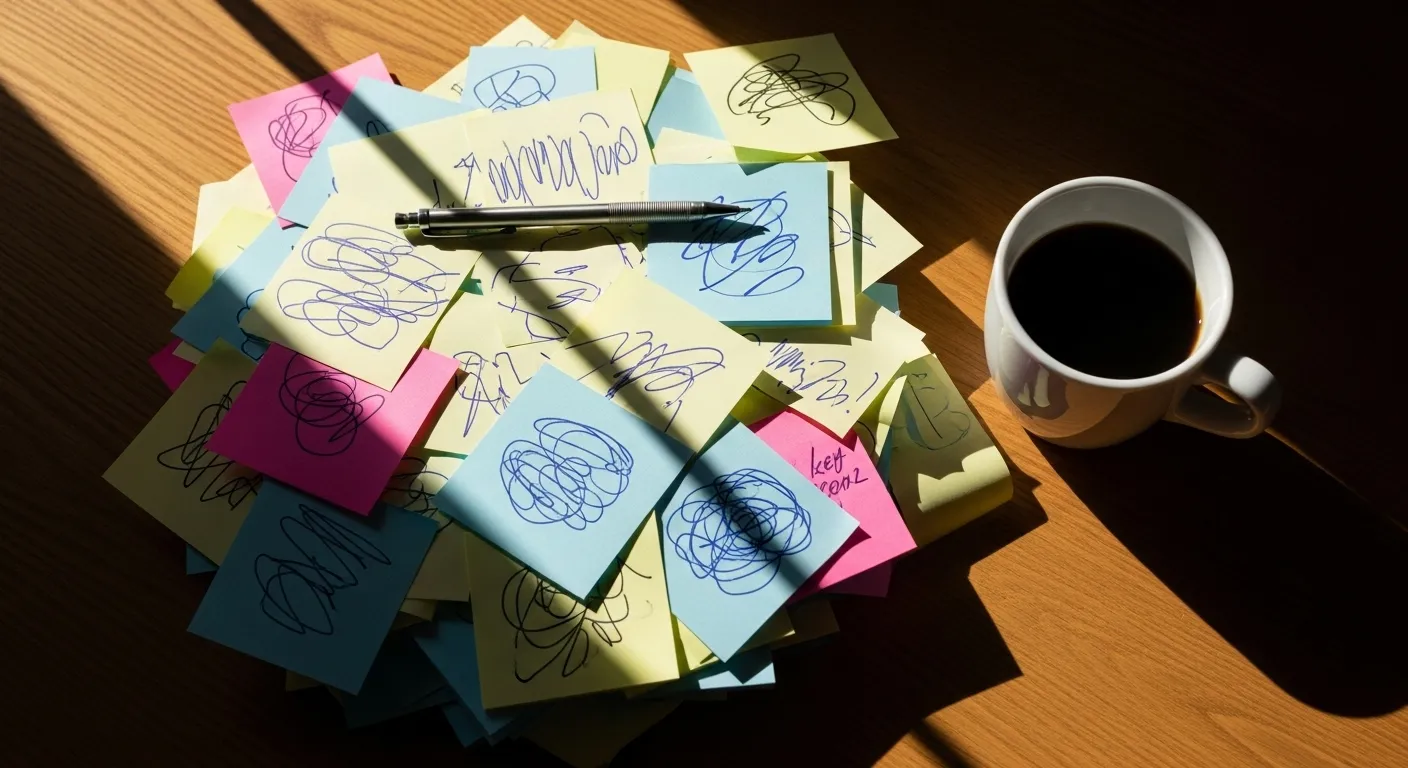
Does your to-do list feel endless? Do you jump from email to meeting to task, feeling a constant hum of urgency? At the end of the day, are you exhausted but wonder what you actually accomplished? If this sounds familiar, you’re not alone. You might be experiencing a modern phenomenon: an addiction to being busy.
This isn’t a formal diagnosis, but a pattern of behavior. It’s the feeling that if you’re not actively doing something, you’re falling behind. It’s the constant need to fill every spare moment with activity, often at the expense of genuine progress. This state of perpetual motion creates a powerful illusion of productivity. We mistake activity for achievement. We wear our busyness like a badge of honor, a sign of our importance and work ethic.
But this constant state of busyness comes at a high cost. It creates immense mental friction, drains our energy, and leaves us feeling overwhelmed and scattered. It prevents us from doing the deep, meaningful work that truly moves the needle. You want less overwhelm and more sustained attention. You want to feel calm, in control, and genuinely productive.
The good news is that you can break this cycle. It’s not about finding a magical productivity hack or a new app. It’s about understanding the mechanics of your own attention and building simple, powerful rituals to protect it. In this guide, we’ll explore why you feel addicted to busy and provide practical focus rituals you can start using today. You can trade the chaos of busyness for the calm of focused productivity.
📚 Table of Contents
- Understanding the Attention Trap: Why We’re Addicted to Busy
- The Lure of Dopamine and Easy Wins
- The Pain of Context Switching
- The Weight of Cognitive Load
- Your Natural Energy Rhythms
- The Four Essential Focus Rituals to Stop Being Busy
- 1. The Startup Ritual: Taming the Morning Chaos
- 2. The Deep Work Entry Ritual: Getting into Flow
- 3. Break Hygiene: The Art of Strategic Rest
- 4. The Shutdown Ritual: Creating a Clear Finish Line
- Your 15-Minute Focus Starter Pack
- Mental Tools to Rewire Your Brain for Focus
- 1. Reframe Perfectionism as a Form of Procrastination
- 2. Reduce Friction for What Matters (and Add It for Distractions)
- 3. Script Your Reset After Derailment
- Putting It into Practice: Two Common Scenarios
- Frequently Asked Questions About Focus and Productivity
- Is listening to music while I work a good idea or a distraction?
- I hear multitasking is a myth, but I feel like I have to do it for my job. What can I do?
- What should I do when my motivation completely disappears?
- I’m great at focusing during the day, but I can’t shut my brain off in the evenings. Any advice?
- How long does it take to break the “addicted to busy” habit?
- Your Seven-Day Plan to Stop Being Busy

Understanding the Attention Trap: Why We’re Addicted to Busy
To learn how to stop being busy, we first need to understand why we get trapped in this cycle. It’s not a personal failing or a lack of willpower. Our brains are wired in ways that, when combined with modern work culture, make the allure of busyness almost irresistible. Let’s look at the difference between being busy vs productive and the underlying patterns that keep us stuck.
Busyness is about motion. It’s about having a full calendar and an overflowing inbox. Productivity, on the other hand, is about momentum. It’s about making meaningful progress on the things that matter most. Someone who is busy might answer 100 emails in a day. Someone who is productive might answer 10, but also complete the first draft of a critical project proposal. The first person feels exhausted; the second feels accomplished.
So why do we choose the path of busyness so often? It comes down to a few core concepts about how our attention and energy work.
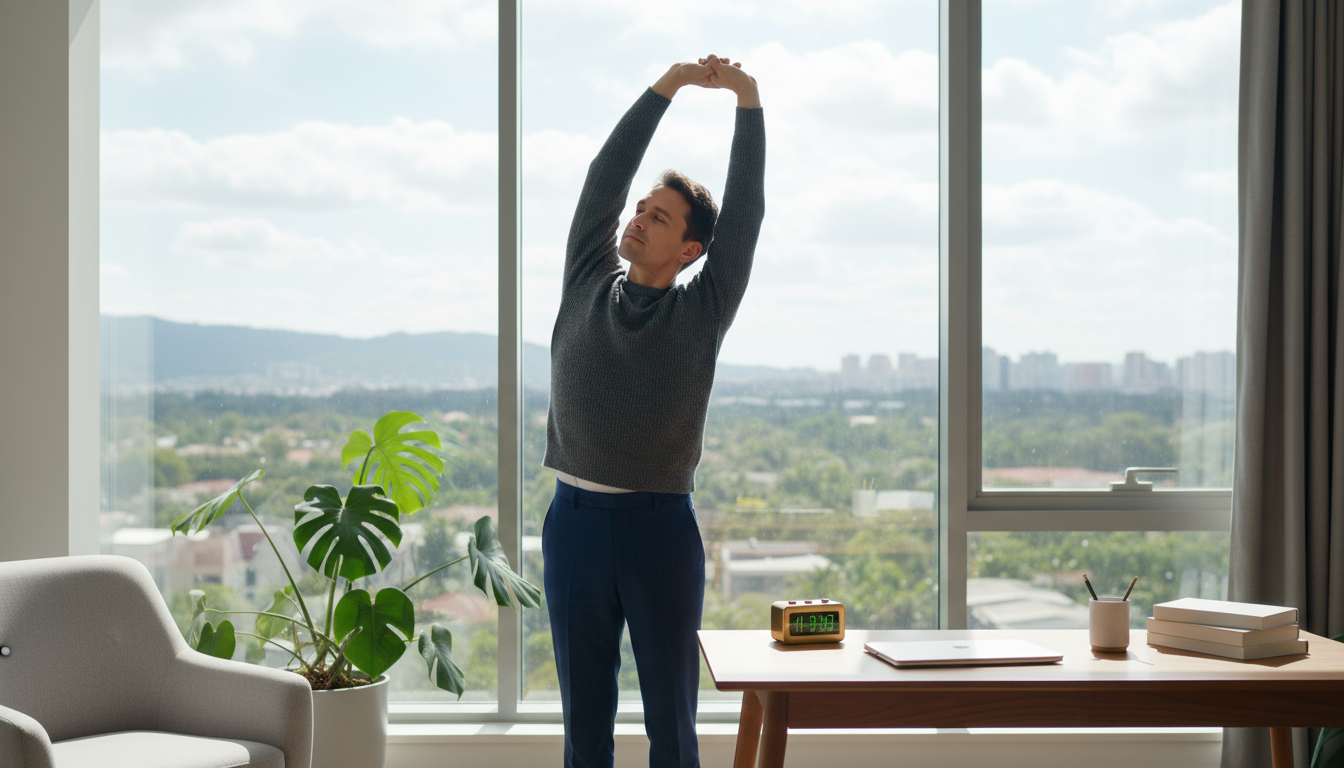
The Lure of Dopamine and Easy Wins
Our brains are wired to seek rewards. When we complete a small, easy task—like answering an email, responding to a message, or crossing a simple item off a list—our brain releases a small amount of dopamine, a neurotransmitter associated with pleasure and reward. This creates a feedback loop. Do a small thing, get a small reward, feel good, and want to do another small thing.
This is why you might find yourself clearing out your inbox instead of starting that big, intimidating report. The small tasks offer immediate gratification, making us feel productive in the moment. The big, important tasks offer a delayed, uncertain reward. We become addicted to busy because we’re chasing these small, constant hits of dopamine. We’re addicted to the feeling of getting things done, even if those things aren’t important.

The Pain of Context Switching
Our brains are not designed for multitasking. What we think of as multitasking is actually rapid task-switching, or what neuroscientists call context switching. Think of context switching as the mental cost of changing gears. Every time you shift your focus from one task to another—say, from writing a report to checking a notification and back again—your brain has to shut down the context of the first task and load up the context for the second. This isn’t seamless.
Research from organizations like the American Psychological Association (https://www.apa.org) shows that context switching can cost you up to 40 percent of your productive time. It increases errors, makes tasks take longer, and significantly drains your mental energy. A day filled with constant switching leaves you feeling busy and drained, but with little to show for it. Protecting your focus means minimizing this costly mental habit.

The Weight of Cognitive Load
Imagine your brain’s working memory is like the RAM on a computer. It can only hold and process a certain amount of information at one time. This is your cognitive load. When you try to juggle too many tasks, ideas, and open loops at once, you overload your cognitive capacity. Your “RAM” gets full, and your mental processing slows down to a crawl.
Being constantly busy is a recipe for high cognitive load. You’re trying to remember a dozen pending tasks, think about an upcoming meeting, and process incoming emails all at the same time. This overload leads to decision fatigue, mental fog, and a feeling of being completely overwhelmed. True productivity comes from managing your cognitive load, not maxing it out.

Your Natural Energy Rhythms
Our energy and focus are not constant throughout the day. We all have natural ultradian rhythms, cycles of high and low energy that last about 90 to 120 minutes. During the peak of a cycle, you have a high capacity for focused, demanding work. During the trough, your brain needs a period of rest and recovery to clear out metabolic waste and consolidate information.
The “always-on” culture of busyness ignores these natural rhythms. We try to push through the slumps with more caffeine and more willpower, which only leads to burnout. A productive system works with these energy cycles, not against them. It involves scheduling your most important work for your peak energy times and intentionally scheduling restorative breaks during your energy troughs. Recognizing this simple biological fact is a huge step toward sustainable focus.

The Four Essential Focus Rituals to Stop Being Busy
Breaking the addiction to busyness requires more than just willpower. It requires a new system—a set of simple, repeatable behaviors that protect your attention and manage your energy. We call these focus rituals. They provide structure to your day, reduce decision fatigue, and create the conditions necessary for deep work.
Instead of relying on fleeting motivation, you’ll rely on a consistent process. Here are four essential rituals to help you stop being busy and start being intentionally productive.
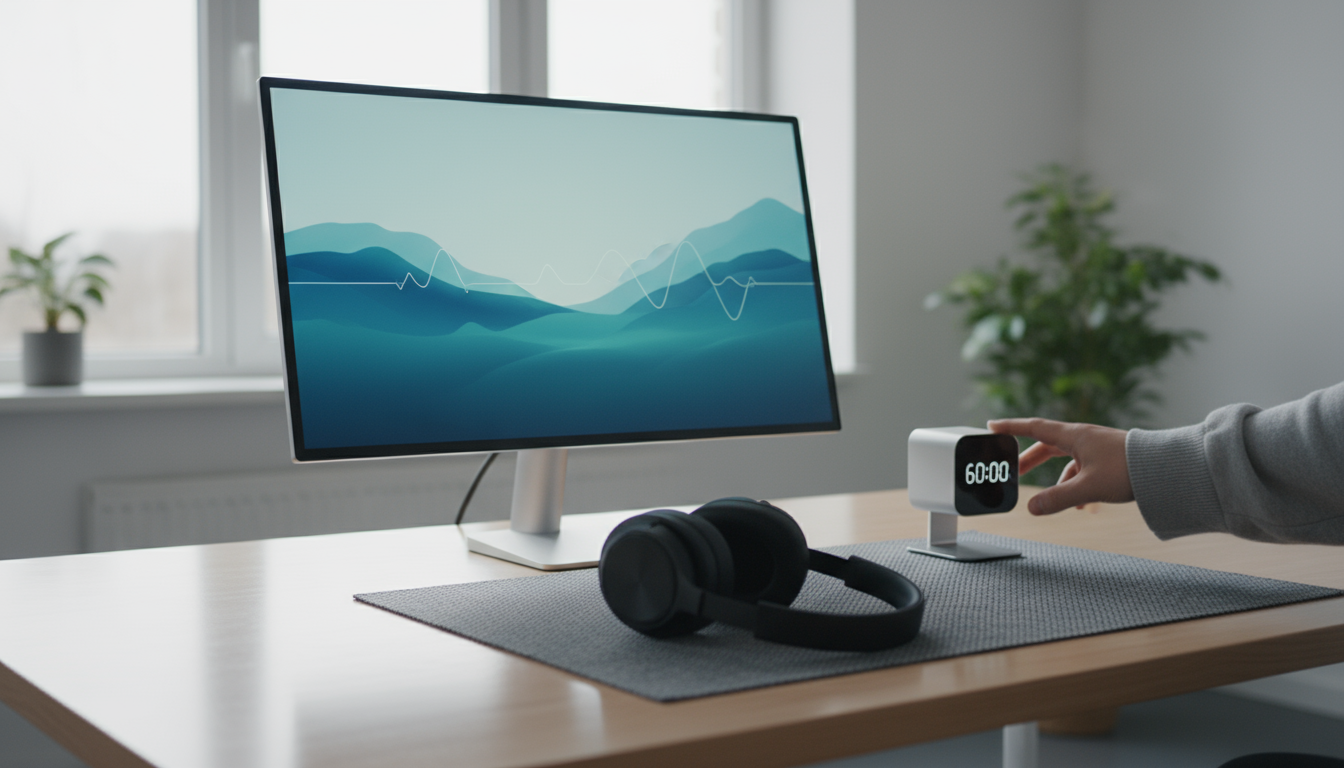
1. The Startup Ritual: Taming the Morning Chaos
How you start your day often determines how the rest of it will go. Many of us begin by immediately checking email or social media, letting the priorities and emergencies of others dictate our focus. This is a reactive approach. The Startup Ritual is about starting your day with intention.
It’s a 10-to-15-minute routine that you perform before you engage with the outside world. The goal is to set your priorities and calm your mind. It might look something like this:
First, avoid your phone. Don’t look at email or notifications. Instead, take a moment for quiet reflection. You could spend two minutes just breathing deeply. Then, review your goals for the week or month. This reminds you of the bigger picture.
Next, identify your one to three Most Important Tasks (MITs) for the day. These are the tasks that, if completed, will make you feel accomplished. Write them down on a physical piece of paper or a digital note. This simple act creates a clear plan and reduces the cognitive load of trying to remember what you need to do. Only after you have this clarity should you open your inbox.

2. The Deep Work Entry Ritual: Getting into Flow
Starting a big, important task can be daunting. We often procrastinate by doing small, busy tasks instead. A Deep Work Entry Ritual is a short, consistent routine that signals to your brain that it’s time to focus. It helps you overcome that initial resistance and ease into a state of deep concentration, often called a flow state. A flow state is that magical zone where you’re fully immersed in an activity, time seems to fly by, and your work feels effortless and high-quality.
Your entry ritual could be just a few minutes long. It might involve clearing your desk, closing all unnecessary tabs on your computer, putting on a specific playlist (or noise-canceling headphones), and setting a timer for a 60- or 90-minute block. The specific actions don’t matter as much as their consistency. The repetition trains your brain. Just like an athlete’s pre-game routine, your entry ritual gets your mind ready for peak performance.

3. Break Hygiene: The Art of Strategic Rest
Many people who are addicted to busy see breaks as a sign of weakness or wasted time. They “rest” by scrolling through social media or checking news headlines. But this isn’t true rest. It just bombards your brain with more information, increasing your cognitive load.
Effective break hygiene is about giving your brain a real chance to recharge. True breaks should be restorative. During your break, step away from all screens. Look out a window, stretch, walk around, or get a glass of water. Focus on something non-digital and non-work-related. This allows your prefrontal cortex—the part of your brain responsible for focus and decision-making—to recover.
Aim for a short 5- to 10-minute break after every 60 to 90 minutes of focused work. This aligns with your natural ultradian rhythms. It prevents burnout and ensures that you can maintain a high level of focus throughout the day, not just for the first hour.
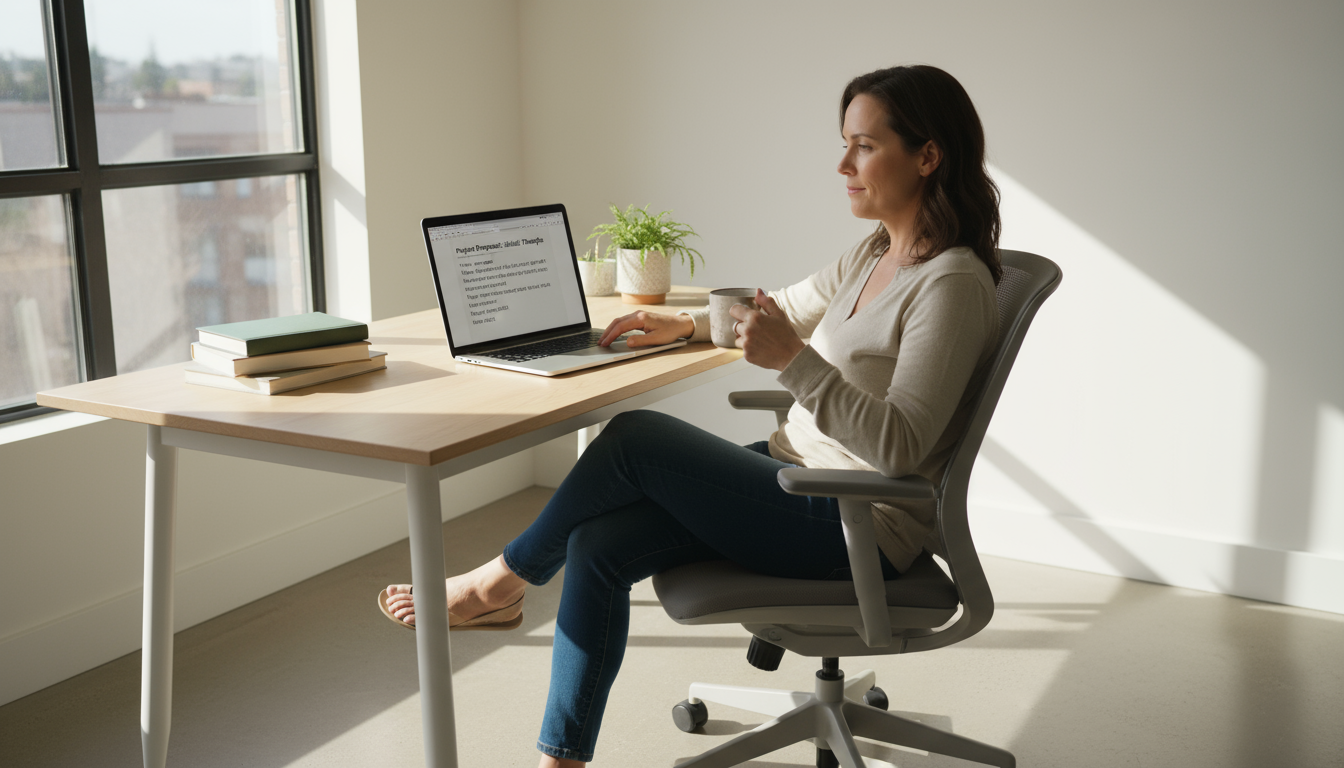
4. The Shutdown Ritual: Creating a Clear Finish Line
The feeling of being busy often stems from a workday that never truly ends. Work bleeds into our personal time because we never formally close the open loops in our minds. A Shutdown Ritual is a consistent routine at the end of your workday that signals a clear, final end.
This ritual, which can take about 10 minutes, involves a few key steps. First, review what you accomplished today. Acknowledge your progress. Second, review your calendar and task list for tomorrow. This clears the “what’s next” anxiety from your mind. If any new tasks or ideas are floating around in your head, capture them in your system (a notebook or task manager) so you can forget about them for the night.
Finally, perform a concluding action. This could be tidying your desk, closing all your work tabs, or saying a specific phrase like “shutdown complete.” This small, symbolic act creates a psychological boundary between work and rest, allowing you to truly disconnect and recharge. This is critical for long-term sustainable productivity.
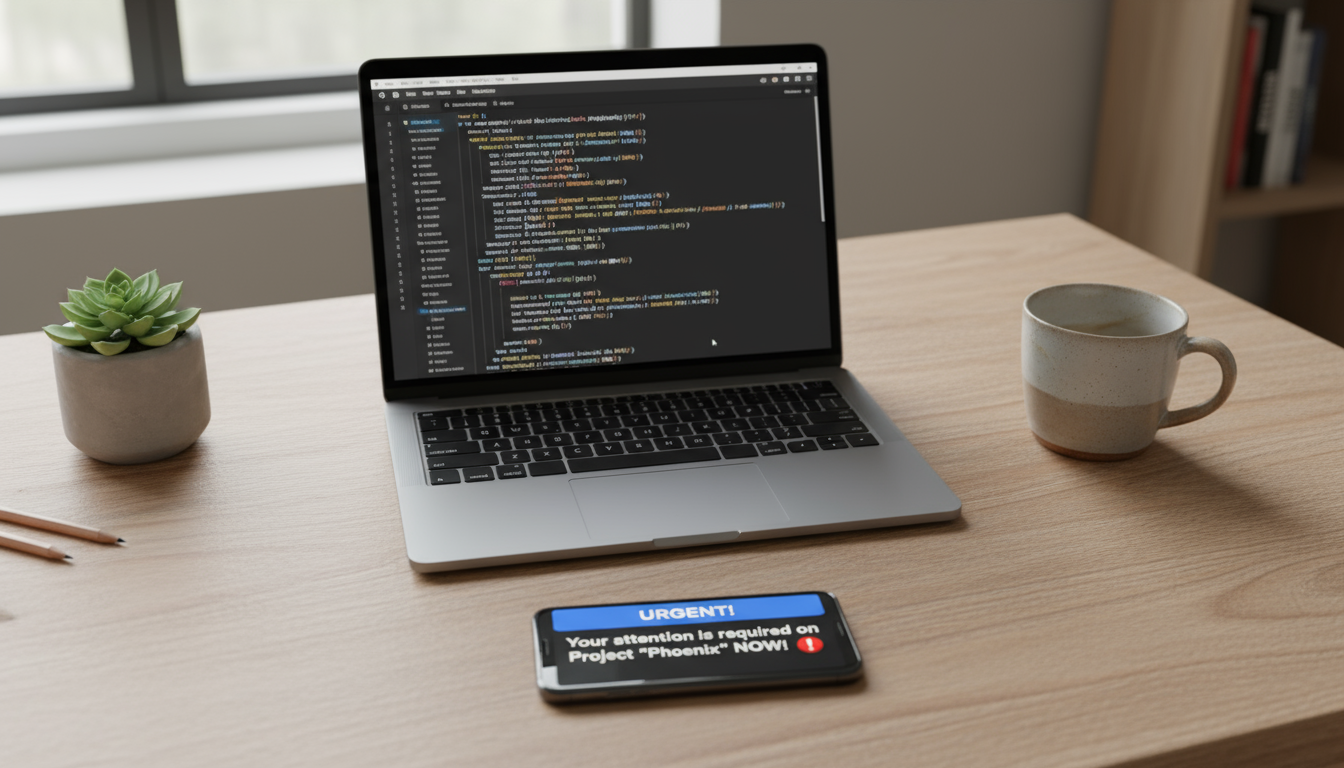
Your 15-Minute Focus Starter Pack
Feeling overwhelmed by these new rituals? Don’t be. You don’t have to implement everything at once. Here is a simple, 15-minute starter pack to begin breaking the busyness cycle today.
Morning (5 minutes): Before checking your phone, take a glass of water and sit quietly. Write down the single most important thing you want to accomplish today. Just one.
Midday (5 minutes): Schedule a five-minute “no-screen” break. Set a timer. Get up, stretch, and look out a window. Do not touch your phone or computer.
End of Day (5 minutes): Before you close your laptop, take five minutes to write down any lingering to-dos for tomorrow. Then, close all work-related applications. Say “done for today” out loud. This small routine will help you stop being busy in your mind long after you’ve stopped working.

Mental Tools to Rewire Your Brain for Focus
Rituals provide the structure, but lasting change also requires shifting your mindset. The addiction to busyness is deeply rooted in our thoughts and beliefs about work, value, and perfection. By upgrading your mental models, you can dismantle the psychological drivers that keep you trapped in a cycle of overwhelm. Here are three powerful thought tools to help you do just that.

1. Reframe Perfectionism as a Form of Procrastination
Perfectionism is often seen as a positive trait, a commitment to high standards. But in reality, it’s often a major barrier to productivity. It’s a fear of being judged, of making mistakes, of not being good enough. This fear can be paralyzing. It’s a key reason why we choose the safety of small, busy tasks over the vulnerability of starting a big, important project.
How do you reframe it? Start by recognizing that “perfect” is the enemy of “done.” A finished project with minor flaws is infinitely more valuable than a perfect project that never gets completed. The goal is not flawlessness; it’s progress. Embrace the concept of a “good enough” first draft. Give yourself permission to be a beginner or to make mistakes. Remind yourself that you can always iterate and improve later.
When you feel perfectionism creeping in, ask yourself: “What is one small step I can take right now to move this forward, even if it’s not perfect?” This shifts your focus from an unattainable ideal to a tangible action. This is a crucial step if you truly want to understand how to stop being busy and start delivering results.
2. Reduce Friction for What Matters (and Add It for Distractions)
Our brains are fundamentally lazy. They are designed to conserve energy, which means we naturally gravitate toward the path of least resistance. This is why it’s so easy to open a social media app (zero friction) and so hard to start writing a complex report (high friction). The secret is to consciously redesign your environment to make focused work easier and distractions harder.
To reduce friction for important tasks: Prepare everything you need in advance. If you want to work on a presentation in the morning, open the file and gather your notes the night before. If you want to go to the gym, lay out your clothes before you go to bed. The fewer steps between you and the desired action, the more likely you are to do it.
To add friction for distractions: Make it harder to access your biggest time-wasters. Log out of social media accounts on your work computer. Move distracting apps to a folder on the last page of your phone’s home screen. Put your phone in another room when you need to do deep work. This small amount of added effort can be enough to break the automatic, mindless habit of checking. You are gently nudging your “lazy” brain toward more productive choices.

3. Script Your Reset After Derailment
No matter how good your system is, you will have days when you get distracted. You’ll fall down a rabbit hole of emails or get pulled into an unplanned meeting. The difference between a productive person and a busy person isn’t that they never get derailed. It’s how quickly they get back on track.
People addicted to busy often fall into an “all-or-nothing” mindset. One distraction derails the entire day. They think, “Well, my morning is already shot, so I might as well give up on today.” A more resilient approach is to have a pre-planned reset script. This is a simple, non-judgmental plan for what to do when you notice you’re off track.
Your script could be as simple as this:
- Acknowledge without judgment: “Okay, I just spent 30 minutes on something unplanned. That’s okay.”
- Take one deep breath: This calms your nervous system and breaks the pattern.
- Consult your plan: Look at the one to three Most Important Tasks you identified in your Startup Ritual.
- Take one small action: Identify the very next physical action you can take on your top priority. It could be as small as “open the document” or “write one sentence.”
This script turns a moment of potential failure into a simple course correction. It removes the drama and self-criticism and gets you back to productive work quickly and compassionately. It’s a powerful tool to stop being busy and start being resilient.

Putting It into Practice: Two Common Scenarios
Theory is one thing; real life is another. Let’s explore how these focus rituals and mental tools can be applied in two common, challenging situations. Seeing the difference between a “busy” approach and a “productive” approach can make these concepts much more concrete.

Scenario 1: The Tight Deadline Project
You have a major project due in three days. The pressure is on, and the temptation is to work frantically, skipping breaks and trying to do everything at once.
The “Busy” Approach: You open your laptop and are immediately overwhelmed by the sheer volume of work. You jump into your email first, thinking you need to “clear the decks.” An hour later, you’ve answered 30 emails but made no progress on the project. You start working on the project but keep your email and chat notifications on, telling yourself you need to be available for urgent questions. You work through lunch, eating at your desk while trying to multitask. By the end of the day, you’ve been working nonstop for 10 hours, feel completely fried, and the project is still nowhere near complete.
The “Productive” Approach: You start the day with your Startup Ritual. You ignore your inbox and identify the three most critical components of the project that need to be completed today. You decide to tackle the hardest one first. You perform your Deep Work Entry Ritual: you turn off all notifications, put your phone in another room, and set a timer for 90 minutes. For that 90-minute block, you do nothing but work on that one component. This is monotasking, the practice of dedicating your full attention to a single task, which dramatically improves the quality and speed of your work. After the timer goes off, you take a 15-minute Break Hygiene break where you walk outside. You repeat this pattern two more times. You check your email in a designated batch at noon. At the end of an eight-hour day, you have completed the three critical components, feel a sense of accomplishment, and have the energy to come back strong tomorrow. You’ve made significant progress by focusing on momentum, not just motion.

Scenario 2: The Noisy, Distracting Home Environment
You work from home, and your environment is filled with potential distractions: family members, pets, household chores, the television. It feels impossible to concentrate.
The “Busy” Approach: You try to work from the kitchen table, the hub of household activity. You attempt to write a report while also half-listening to a family member’s conversation and keeping an eye on the laundry. Every time you get into a rhythm, someone asks you a question or the dog barks. You feel constantly interrupted and frustrated. Your solution is to work longer hours, trying to find quiet pockets late at night after everyone is asleep. You feel like you are always “on,” either working or doing chores, and never truly resting.
The “Productive” Approach: You recognize that you need to be intentional about your environment. You add friction to distractions by finding a dedicated workspace, even if it’s just a small corner in a quiet room. You have a conversation with your family, explaining that when your noise-canceling headphones are on, it’s your signal for a “deep work” block and you shouldn’t be disturbed except for emergencies. You use time-blocking to schedule your focus sessions. You also schedule blocks for household chores and family time. This creates clear boundaries. During your focus blocks, you follow your rituals. When a distraction inevitably occurs, you use your Reset Script. You acknowledge the interruption, take a breath, and gently guide your attention back to your primary task. You’re not fighting against your environment; you’re designing a system to work effectively within it.
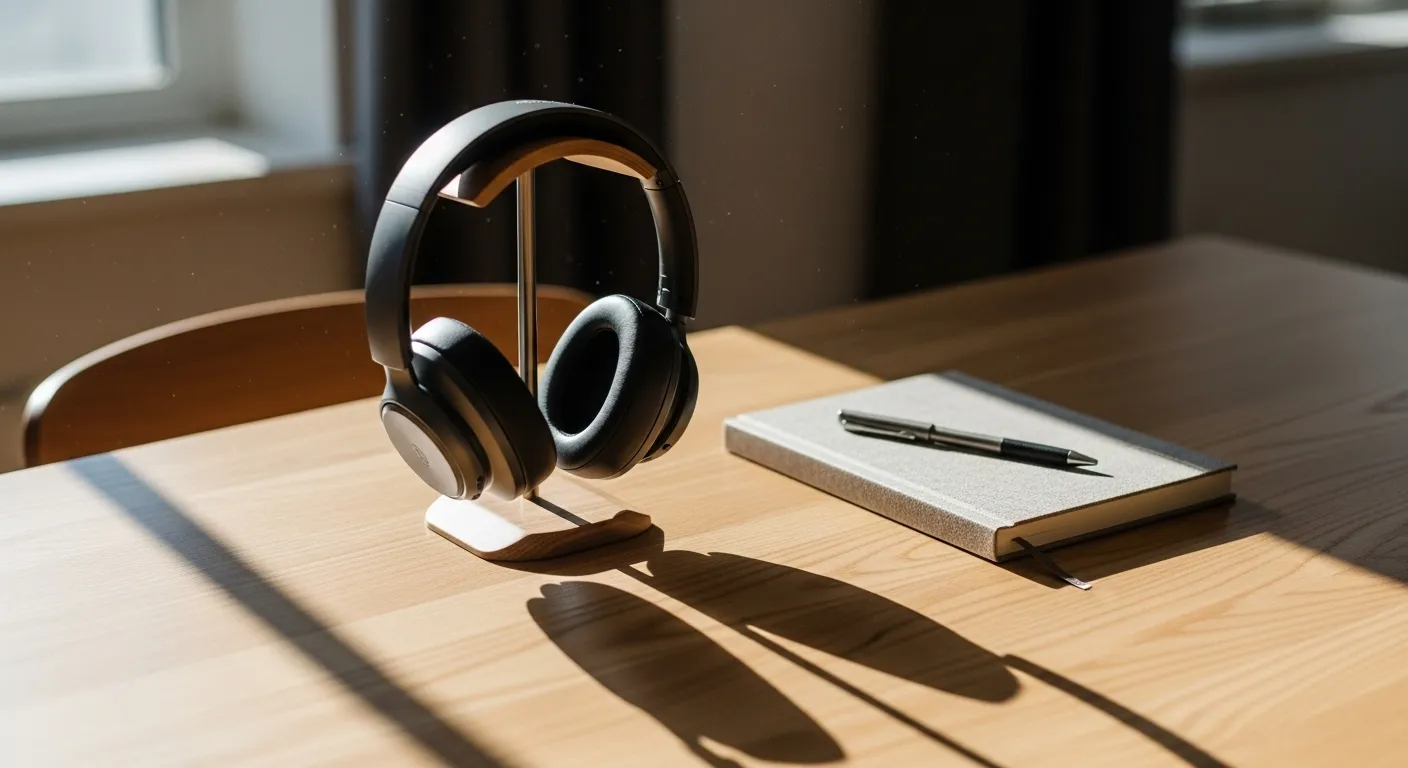
Frequently Asked Questions About Focus and Productivity
As you begin to shift from a busy mindset to a productive one, questions will naturally arise. Here are answers to some of the most common queries we hear at TheFocusedMethod.com from people learning to stop being busy.
Is listening to music while I work a good idea or a distraction?
The answer depends on the type of music and the type of task. For repetitive, mundane tasks, music with lyrics can be fine and even motivating. However, for cognitively demanding work that involves language, such as writing or complex problem-solving, music with lyrics can interfere with your brain’s language processing centers, increasing cognitive load. Research from institutions that study human cognition, such as those funded by the National Institutes of Health (https://www.nih.gov), suggests that for deep focus, instrumental music, ambient sounds, or white noise are generally better choices. The key is consistency. If you find a type of audio that helps you focus, incorporate it into your Deep Work Entry Ritual to help signal to your brain that it’s time to concentrate.
I hear multitasking is a myth, but I feel like I have to do it for my job. What can I do?
You are correct; true multitasking is a myth. Our brains are switching rapidly, not doing things simultaneously. This context switching is inefficient and draining. While some jobs require you to be highly responsive, you can still create pockets of focused time. Try “batching” similar tasks. Instead of answering every email as it arrives, schedule two or three specific 30-minute blocks per day to process your entire inbox. Instead of constantly monitoring a chat channel, check it once an hour. Communicate your focus blocks to your team: “I’ll be in deep focus on the Q3 report from 10 AM to 11:30 AM and will be offline during that time.” You are managing expectations while carving out the time you need for high-value work. This is the essence of moving from busy vs productive.
What should I do when my motivation completely disappears?
Motivation is a fickle emotion; it comes and goes. Productive people don’t rely on motivation; they rely on systems and rituals. This is where your pre-planned routines become so valuable. On a low-motivation day, don’t think about the huge project. Just focus on starting your Deep Work Entry Ritual. The goal isn’t to feel motivated; it’s to start the process. Often, motivation follows action, not the other way around. Also, give yourself permission to do a shorter focus session. A 25-minute focused block is far better than zero minutes. Finally, check in with your physical state. Low motivation can often be a sign of fatigue, dehydration, or hunger. A short walk, a glass of water, or a healthy snack can sometimes be the most productive thing you can do.
I’m great at focusing during the day, but I can’t shut my brain off in the evenings. Any advice?
This is a classic symptom of not having a clear end to your workday and is a sign you might be addicted to busy thinking. The Shutdown Ritual is designed specifically to solve this problem. By capturing all open loops (lingering tasks and ideas) in a trusted system outside of your head and making a clear plan for tomorrow, you give your brain permission to stop rehearsing them. The symbolic act of shutting down—closing tabs, tidying your desk—creates a powerful psychological boundary. If work thoughts still intrude, have a “worry pad” by your bed. Write the thought down and commit to dealing with it during work hours tomorrow. This acknowledges the thought without letting it hijack your rest.
How long does it take to break the “addicted to busy” habit?
Habit formation is a personal journey, but the key is consistency over intensity. You are unwiring years of ingrained behaviors and thought patterns. Don’t aim for a perfect overnight transformation. Instead, focus on small, consistent wins. Start with the 15-Minute Focus Starter Pack. Practice it for one week. The goal is to build momentum. You may notice small shifts in your first week—a bit less overwhelm, a clearer sense of accomplishment at the end of the day. Significant changes in your mindset and automatic behaviors may take several weeks or even a few months. Be patient and compassionate with yourself. Every time you choose an intentional action over a reactive one, you are strengthening your focus “muscle.”

Your Seven-Day Plan to Stop Being Busy
You now understand the psychology behind the addiction to busyness and have a toolkit of rituals and mental models to create a more focused, productive life. But knowledge without action is just trivia. The final step is to put these ideas into practice.
It can feel overwhelming to change everything at once. So, don’t. For the next seven days, I encourage you to commit to a small experiment. Choose a few simple actions and practice them consistently. This is not about achieving perfection. It’s about starting the process and gathering evidence that a different way of working is possible for you.
Here are three focus actions to try for the next seven days:
1. Define Your “One Thing.” Each morning, before you check your email or phone, take just three minutes. Write down the single most important task you want to complete that day. This act of setting a single, clear priority will be your anchor, guiding your attention back when distractions pull you away.
2. Schedule One “Focus Block.” Look at your calendar each day and block out one 60-minute appointment with yourself for deep work. During this block, honor it as you would a meeting with your most important client. Turn off notifications, close unnecessary tabs, and work only on your “one thing.”
3. Practice a 5-Minute Shutdown. At the end of your workday, before you completely switch off, set a timer for five minutes. Tidy your workspace. Write down any open tasks for tomorrow. Then, close your computer and say to yourself, “The workday is complete.” Create that clean break.
That’s it. Three small changes. For seven days. This experiment will help you feel the profound difference between the frantic energy of being busy and the calm, powerful momentum of being productive. You can break free from the cycle of overwhelm. You can do meaningful work without burning out. It starts not with a grand overhaul, but with a single, intentional step.
Disclaimer: The information provided in this article is for educational and informational purposes only and is not intended as a substitute for advice from a qualified professional. It should not be used for diagnosis or treatment of any medical or psychological condition. Please consult with a licensed professional for any health-related concerns.






